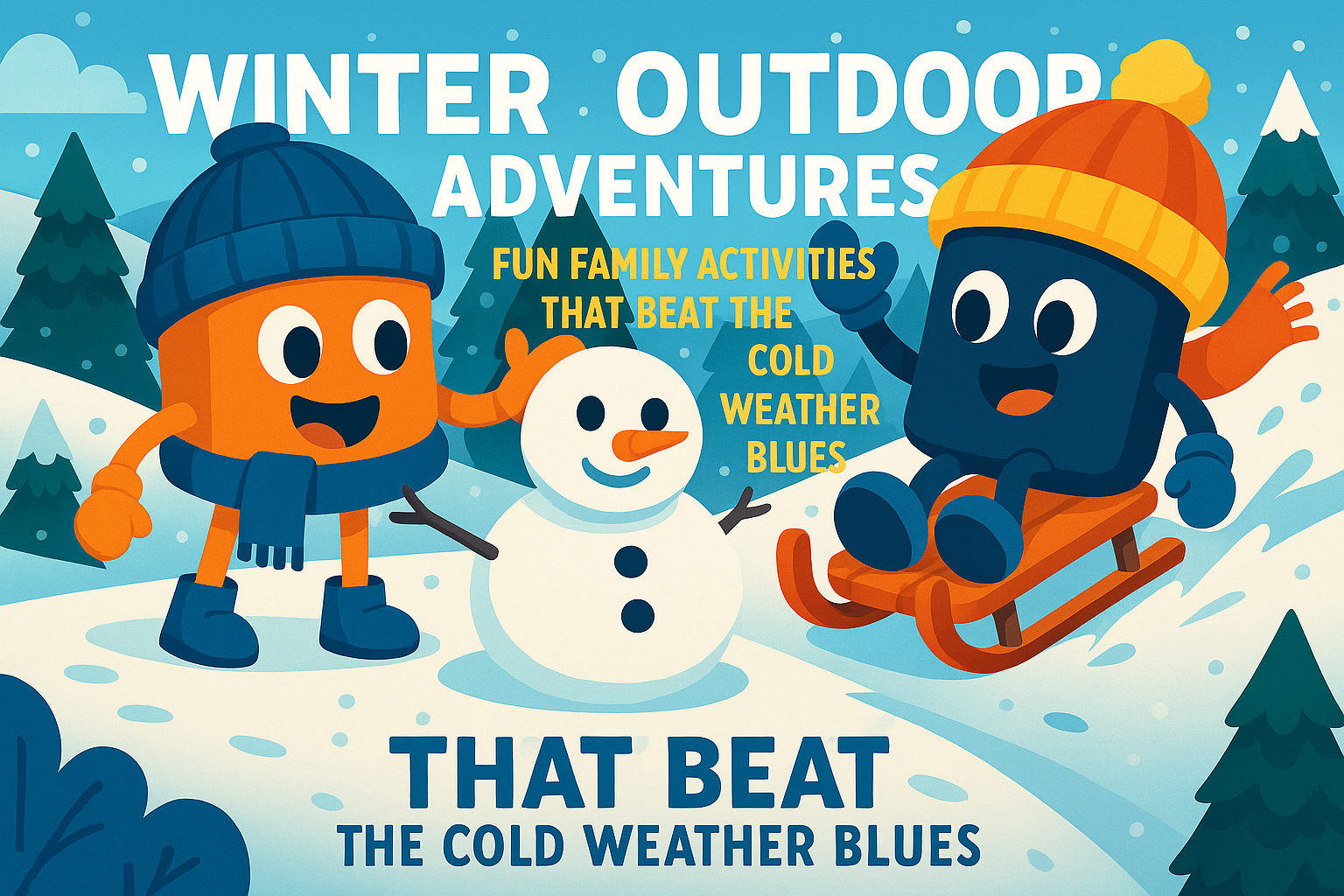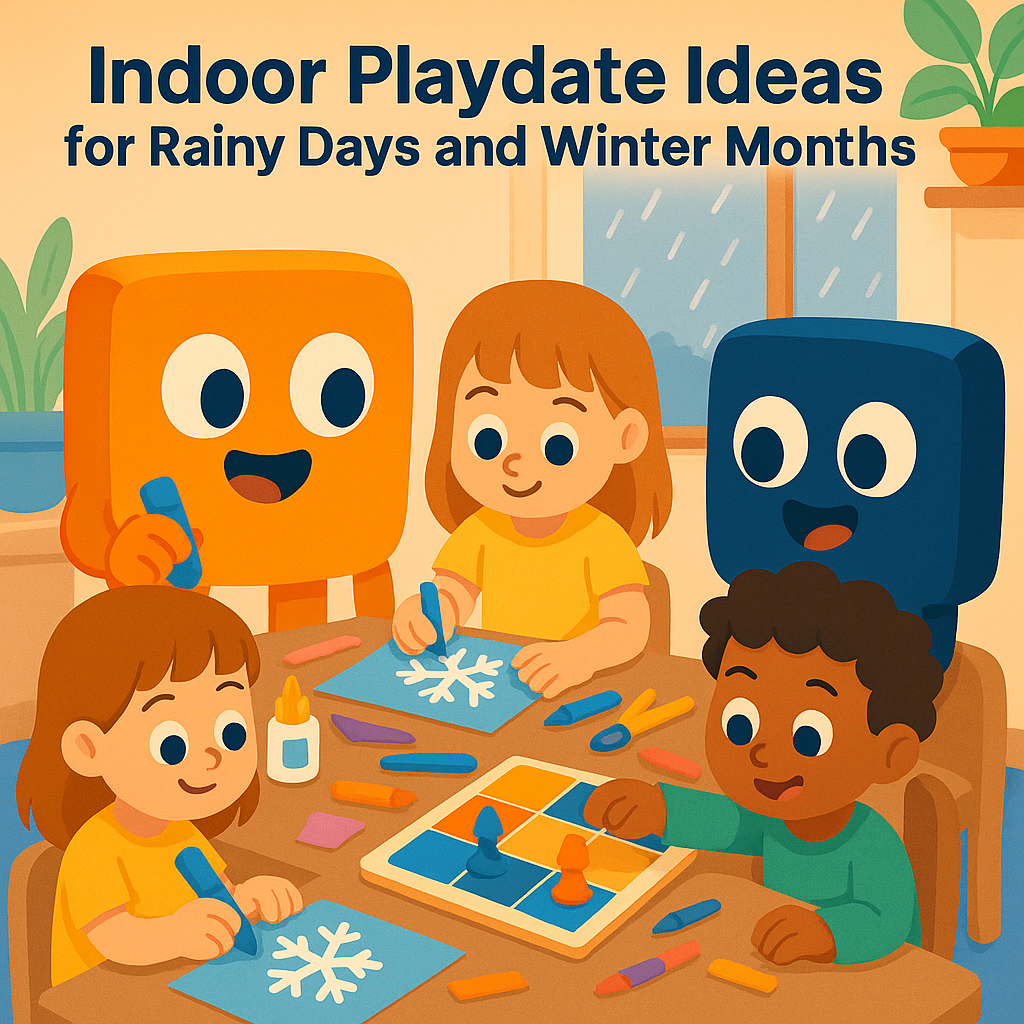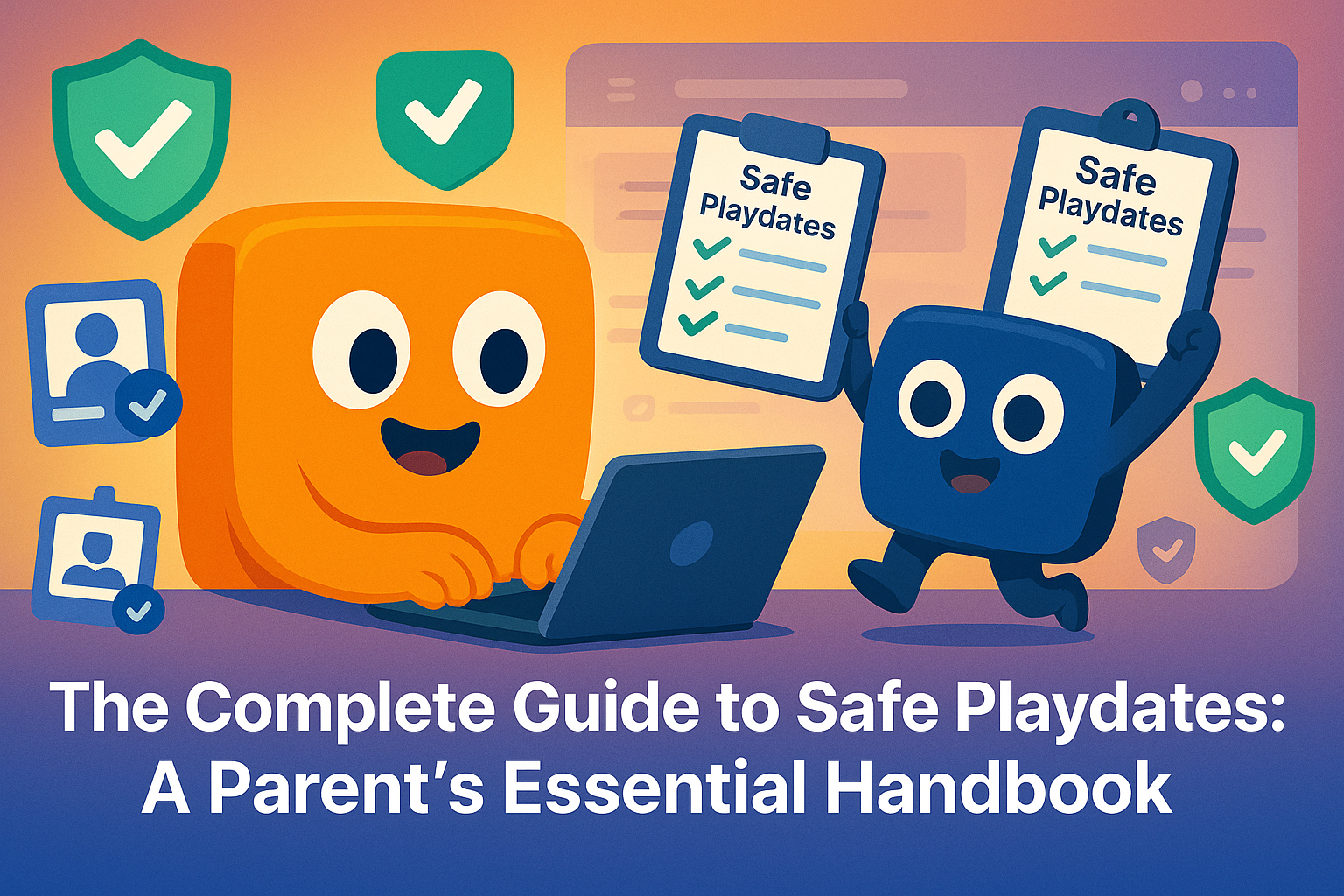Winter Outdoor Adventures: Fun Family Activities That Beat the Cold Weather Blues
When temperatures drop and daylight hours shrink, it's tempting to hibernate indoors until spring. But winter offers unique opportunities for family fun that you simply can't experience any other time of year. With the right preparation and mindset, cold weather can become your family's favorite season for outdoor adventures.
The Benefits of Winter Outdoor Play
Physical Health Benefits
- Vitamin D absorption: Even winter sunlight helps maintain healthy vitamin D levels
- Improved immune system: Cold air exposure can strengthen immune response
- Better sleep: Physical activity in fresh air promotes deeper, more restful sleep
- Increased calorie burn: Bodies work harder to stay warm, burning more calories
Mental Health Benefits
- Mood enhancement: Outdoor light helps combat seasonal depression
- Stress reduction: Nature exposure reduces cortisol levels
- Increased focus: Cold air can improve mental clarity and concentration
- Family bonding: Shared outdoor experiences create lasting memories
Developmental Benefits for Children
- Risk assessment skills: Learning to navigate icy or snowy conditions
- Resilience building: Overcoming discomfort builds mental toughness
- Seasonal awareness: Understanding natural cycles and weather patterns
- Problem-solving: Adapting activities to weather conditions
Essential Winter Gear for Family Adventures
Layering System
Base Layer:
- Moisture-wicking synthetic materials or merino wool
- Avoid cotton, which retains moisture and loses insulation when wet
- Snug fit to trap warm air close to the body
Insulation Layer:
- Fleece, down, or synthetic insulation
- Should be loose enough to trap air but not bulky
- Easy to add or remove as activity level changes
Outer Shell:
- Waterproof and windproof materials
- Breathable to prevent overheating
- Features like ventilation zips and adjustable cuffs
Extremities Protection
Head and Neck:
- Warm hat that covers ears
- Neck gaiter or scarf
- Balaclava for extremely cold conditions
Hands:
- Waterproof gloves or mittens
- Liner gloves for dexterity when needed
- Hand warmers for extended outdoor time
Feet:
- Waterproof, insulated boots with good traction
- Moisture-wicking socks (wool or synthetic)
- Gaiters to keep snow out of boots
Safety Equipment
- Reflective gear for low-light conditions
- Emergency whistle
- First aid kit adapted for cold weather
- Extra layers and emergency shelter
Winter Activity Ideas by Age Group
Toddlers (Ages 2-4)
Snow Play Basics:
- Snow angels: Classic activity that requires minimal skill
- Snowball making: Focus on rolling and shaping rather than throwing
- Snow painting: Use spray bottles with colored water
- Treasure hunts: Hide colorful objects in snow for discovery
Safety Considerations:
- Limit outdoor time to 30-45 minutes
- Watch for signs of cold stress
- Ensure frequent warm-up breaks
- Keep activities close to shelter
Equipment Needs:
- Waterproof snow suits
- Easy-on boots and mittens
- Warm, comfortable layers
- Sleds appropriate for their size
Preschoolers (Ages 4-6)
Building and Creating:
- Snowman construction: Develop planning and cooperation skills
- Snow fort building: Encourage creativity and teamwork
- Ice sculpture: Use molds and natural freezing
- Snow kitchen: Create pretend cooking areas with snow
Active Games:
- Snow tag: Modified tag games in winter conditions
- Follow the leader: Navigate through snow obstacles
- Animal tracking: Look for and identify animal prints
- Winter scavenger hunts: Find specific winter items or phenomena
Learning Opportunities:
- Weather observation: Track temperature, wind, and precipitation
- Winter science: Explore ice formation and snow crystal shapes
- Nature study: Identify winter birds and evergreen trees
- Seasonal changes: Discuss how animals and plants adapt to winter
School-Age (Ages 6-12)
Adventure Activities:
- Snowshoeing: Explore winter trails and natural areas
- Cross-country skiing: Learn basic techniques on gentle terrain
- Ice skating: Natural ice or outdoor rinks
- Winter hiking: Discover how familiar places change in winter
Skill-Building Activities:
- Snow shelter construction: Build quinzhees or snow caves
- Winter photography: Capture unique winter scenes and phenomena
- Orienteering: Learn navigation skills in winter conditions
- Winter camping: Start with backyard camping before venturing out
Team Challenges:
- Snow sculpture competitions: Work in teams to create elaborate designs
- Winter obstacle courses: Design and navigate challenging courses
- Snowball target practice: Set up targets for accuracy games
- Winter sports tournaments: Organize friendly competitions
Teens and Adults
Fitness Activities:
- Winter running: Adapt running routines for cold weather
- Outdoor yoga: Practice cold-weather yoga in scenic locations
- Winter cycling: Fat tire biking or studded tire cycling
- Strength training: Use natural obstacles and winter conditions
Adventure Sports:
- Backcountry skiing: Explore unmarked terrain (with proper training)
- Ice climbing: Learn technical skills with qualified instruction
- Winter mountaineering: Combine hiking with technical winter skills
- Dog sledding: Experience traditional winter transportation
Location-Specific Activities
Urban Winter Fun
City Parks and Spaces:
- Ice skating rinks: Many cities maintain outdoor rinks
- Sledding hills: Designated areas in urban parks
- Winter festivals: Community events and celebrations
- Urban hiking: Explore city trails and greenways in winter
Backyard Adventures:
- Backyard ice rinks: Create your own skating area
- Snow mazes: Design intricate pathways in your yard
- Winter gardening: Maintain cold-weather plants and observe winter wildlife
- Outdoor cooking: Try winter grilling or campfire cooking
Suburban Opportunities
Neighborhood Exploration:
- Winter nature walks: Discover how your neighborhood changes
- Community sledding: Organize group activities with neighbors
- Backyard camping: Experience winter camping safely at home
- Snow sculpture gardens: Create winter art installations
Local Parks and Trails:
- Trail hiking: Explore local trail systems in winter conditions
- Pond activities: Ice fishing or ice skating on frozen ponds (with safety precautions)
- Wildlife observation: Winter is excellent for spotting certain animals
- Photography expeditions: Capture winter beauty in familiar places
Rural and Wilderness Areas
Natural Winter Experiences:
- Backcountry exploration: Venture into less-traveled winter landscapes
- Winter camping: Experience true winter wilderness
- Ice fishing: Learn traditional winter fishing techniques
- Maple sugaring: Participate in traditional maple syrup production
Farm and Agricultural Activities:
- Winter farm visits: See how farms operate in winter
- Sleigh rides: Experience traditional winter transportation
- Winter animal care: Learn about caring for animals in cold weather
- Seasonal food preservation: Understand traditional winter food storage
Safety Considerations and Risk Management
Weather Awareness
Temperature Guidelines:
- Above 32°F (0°C): Generally safe for extended outdoor activity
- 20-32°F (-7 to 0°C): Monitor for cold stress, limit exposure time
- Below 20°F (-7°C): Shorter activities, frequent warm-up breaks
- Below 0°F (-18°C): Consider indoor alternatives or very brief outdoor time
Wind Chill Factors:
- Wind significantly increases cold stress
- Use wind chill charts to assess actual conditions
- Seek shelter from wind when possible
- Adjust activity level based on wind conditions
Precipitation Considerations:
- Wet conditions increase cold stress
- Ensure waterproof outer layers
- Have backup indoor plans
- Monitor for changing conditions
Cold-Related Health Risks
Hypothermia Prevention:
- Recognize early signs: shivering, confusion, fatigue
- Maintain core body temperature through activity and proper clothing
- Stay dry and change wet clothing immediately
- Have emergency warming plans
Frostbite Awareness:
- Most common on fingers, toes, nose, and ears
- Recognize signs: numbness, white or grayish skin, firm or waxy feel
- Prevent through proper clothing and limiting exposure
- Seek immediate medical attention for suspected frostbite
Dehydration Prevention:
- Cold air is dry and increases fluid loss
- Drink warm fluids regularly
- Avoid alcohol, which impairs temperature regulation
- Monitor urine color as hydration indicator
Activity-Specific Safety
Ice Safety:
- Never assume ice is safe without proper testing
- Learn ice thickness requirements for different activities
- Carry ice safety equipment when near frozen water
- Have rescue plans and equipment available
Avalanche Awareness:
- Understand avalanche risks in mountainous areas
- Take avalanche safety courses before backcountry travel
- Carry proper safety equipment
- Check avalanche forecasts and conditions
Equipment Maintenance:
- Regularly inspect winter gear for damage
- Keep equipment clean and properly stored
- Replace worn or damaged items promptly
- Learn basic equipment repair skills
Making Winter Activities Social
Family Group Activities
Multi-Family Adventures:
- Group sledding parties: Organize neighborhood sledding events
- Winter picnics: Hot drinks and warm food in winter settings
- Snow sculpture competitions: Friendly contests between families
- Winter sports days: Rotate through different winter activities
Planning Considerations:
- Coordinate gear and equipment sharing
- Plan for different skill and comfort levels
- Have indoor backup plans
- Establish clear safety protocols
Community Involvement
Local Winter Events:
- Winter festivals: Participate in community celebrations
- Charity events: Winter walks or runs for causes
- Skill-sharing workshops: Learn new winter activities together
- Volunteer opportunities: Help with community winter programs
Creating Your Own Events:
- Neighborhood winter olympics: Organize friendly competitions
- Winter nature clubs: Regular group outdoor exploration
- Skill-sharing groups: Teach and learn winter activities
- Family winter challenges: Set and achieve winter activity goals
Conclusion
Winter doesn't have to mean the end of outdoor family fun. With proper preparation, the right mindset, and creative planning, cold weather can provide some of your family's most memorable outdoor experiences.
The key is to start small, build confidence and skills gradually, and always prioritize safety. As your family becomes more comfortable with winter activities, you'll discover a whole new world of seasonal adventures that will have you looking forward to the first snowfall.
Remember that the goal isn't to conquer winter, but to embrace it. Every family's winter adventure journey will look different, and that's perfectly fine. Find the activities that work for your family's interests, abilities, and comfort level, and build from there.
Winter outdoor adventures aren't just about staying active—they're about creating lasting memories, building resilience, and discovering the unique beauty that only the coldest season can offer.
Ready to plan your family's winter adventures? Connect with other outdoor-loving families through My Play Palz and discover new winter activity partners in your area.




